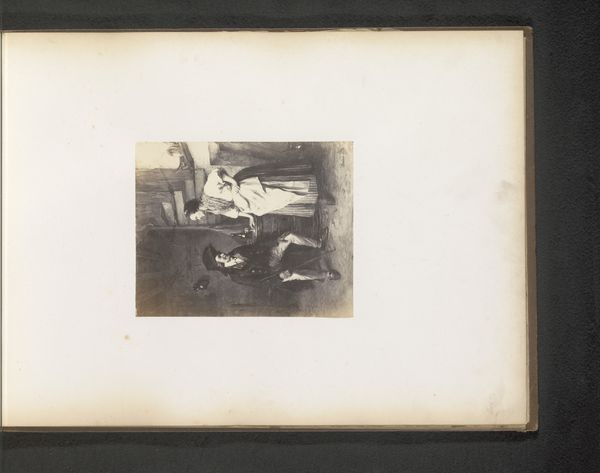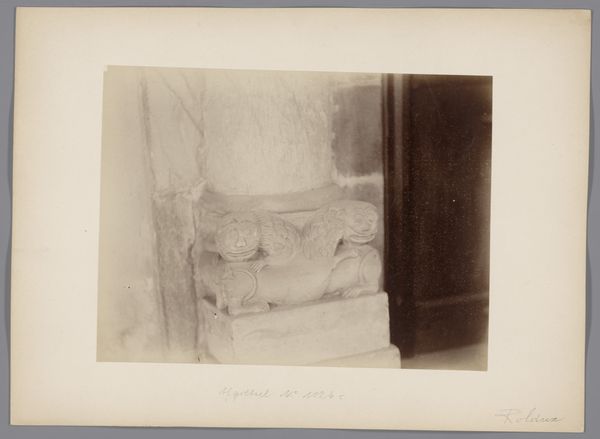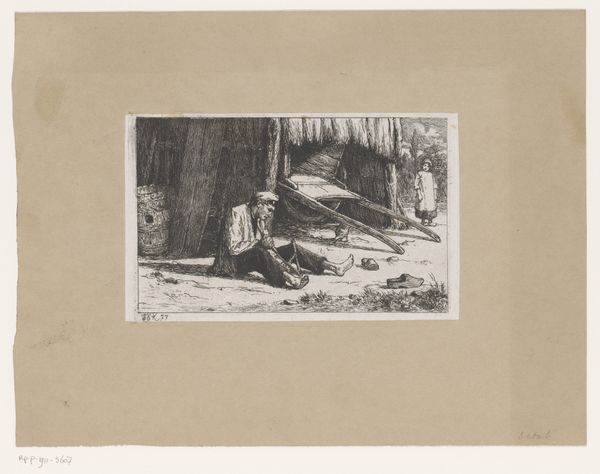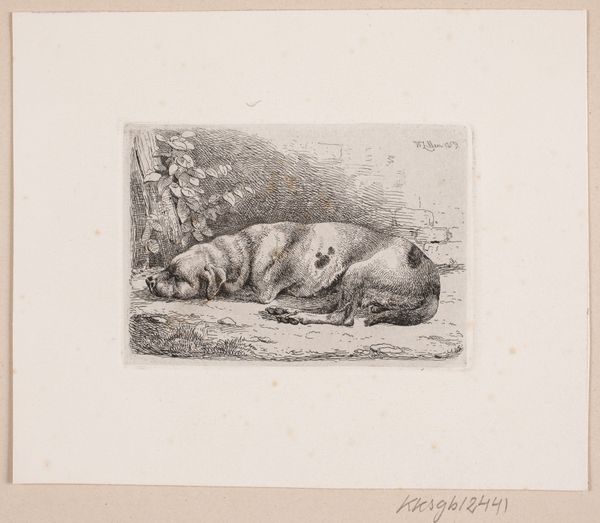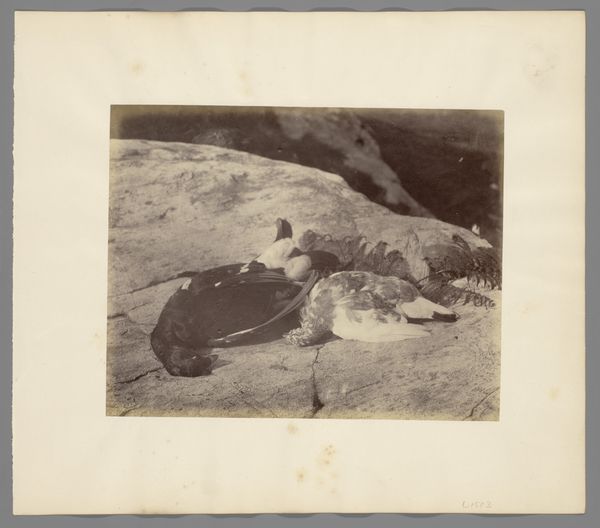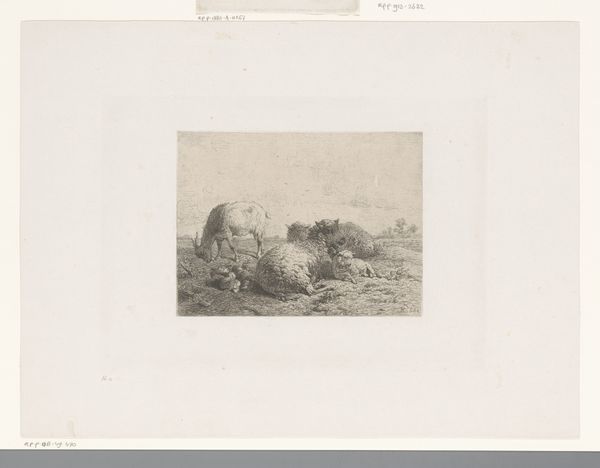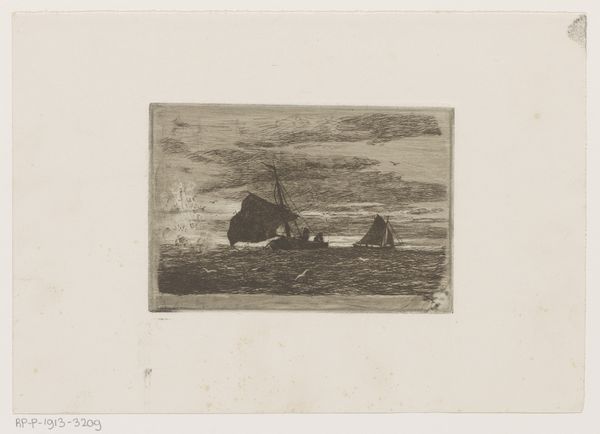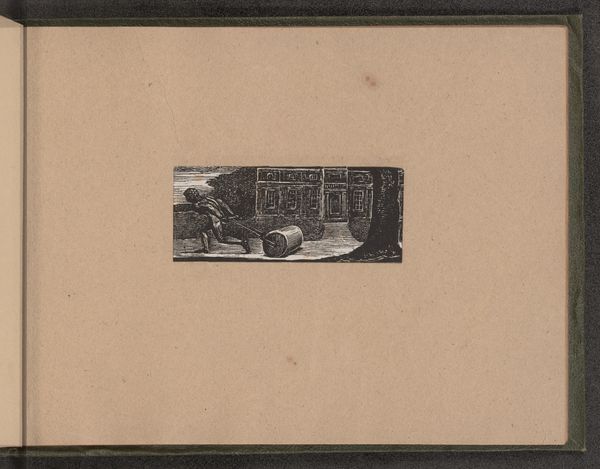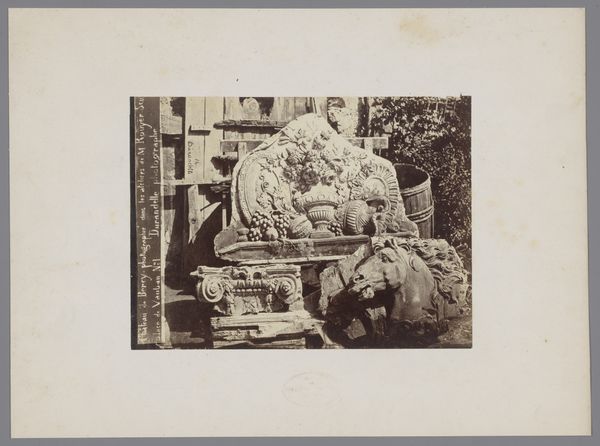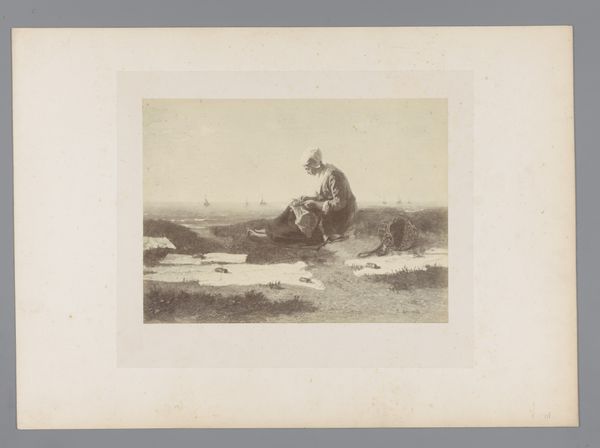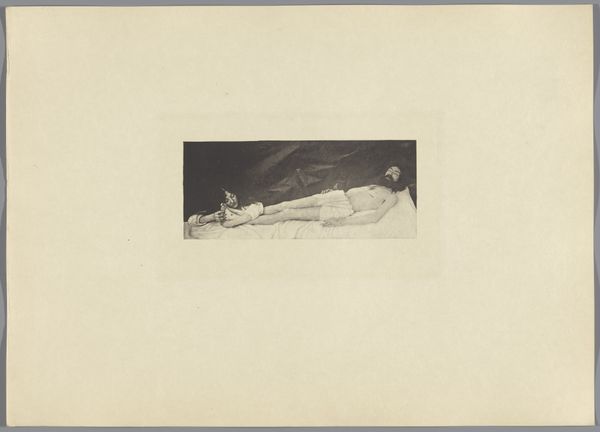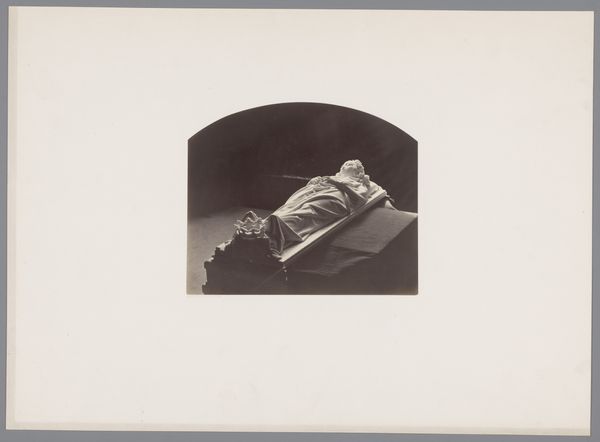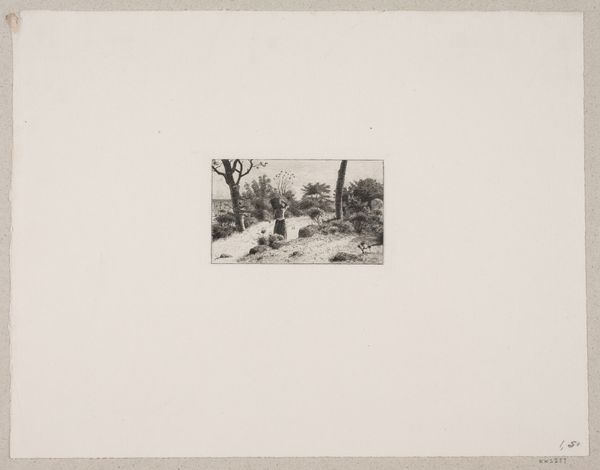
photography, gelatin-silver-print
#
still-life-photography
#
photography
#
ancient-mediterranean
#
gelatin-silver-print
#
history-painting
#
realism
Dimensions: height 304 mm, width 403 mm
Copyright: Rijks Museum: Open Domain
Curator: Here we have a gelatin-silver print created between 1863 and 1875 by Giorgio Sommer entitled, "Plaster Cast of a Body in Pompeii, Italy." Editor: Chilling. The textures, the stark black and white – it evokes a strong sense of desolation, of loss frozen in time. Curator: The photograph meticulously captures the contours and the posture of this figure. Observe the formal arrangement – the subject resting horizontally, framed against the ruinous backdrop. Consider Sommer’s play with light and shadow that emphasize the cast’s three-dimensionality. Editor: Indeed, but consider the implications beyond the aesthetic. This isn’t merely a form; it’s a person—a snapshot of human tragedy and societal collapse from Vesuvius’ eruption. Doesn't this documentation challenge our notions of social memory and disaster narratives, questioning who gets remembered, and how? The very act of memorializing speaks volumes, doesn't it? Curator: The photograph employs a realist style which was quite en vogue, and this helps us to understand the cultural priorities. He captures not just a record, but an almost sculptural rendering through photography, blurring the lines between documentation and art object. Editor: Yet the historical context is undeniably potent. We are confronted by the echoes of those silenced by disaster, aren't we? How might modern power structures similarly neglect or erase marginalized voices caught in contemporary climate crises or political conflicts? Does this image remind us to be socially conscious and proactive rather than bystanders of a moment in time? Curator: I concede the historical weight undeniably adds to the piece’s resonance. Ultimately, this photograph invites us to contemplate the interplay of art and history, and to assess our own positions relative to that intersection. Editor: Absolutely. It urges us to acknowledge how representation can serve as both preservation and a call for change, bridging the gaps between the ancient world and contemporary injustices. It is so telling of time, and humanity.
Comments
No comments
Be the first to comment and join the conversation on the ultimate creative platform.
